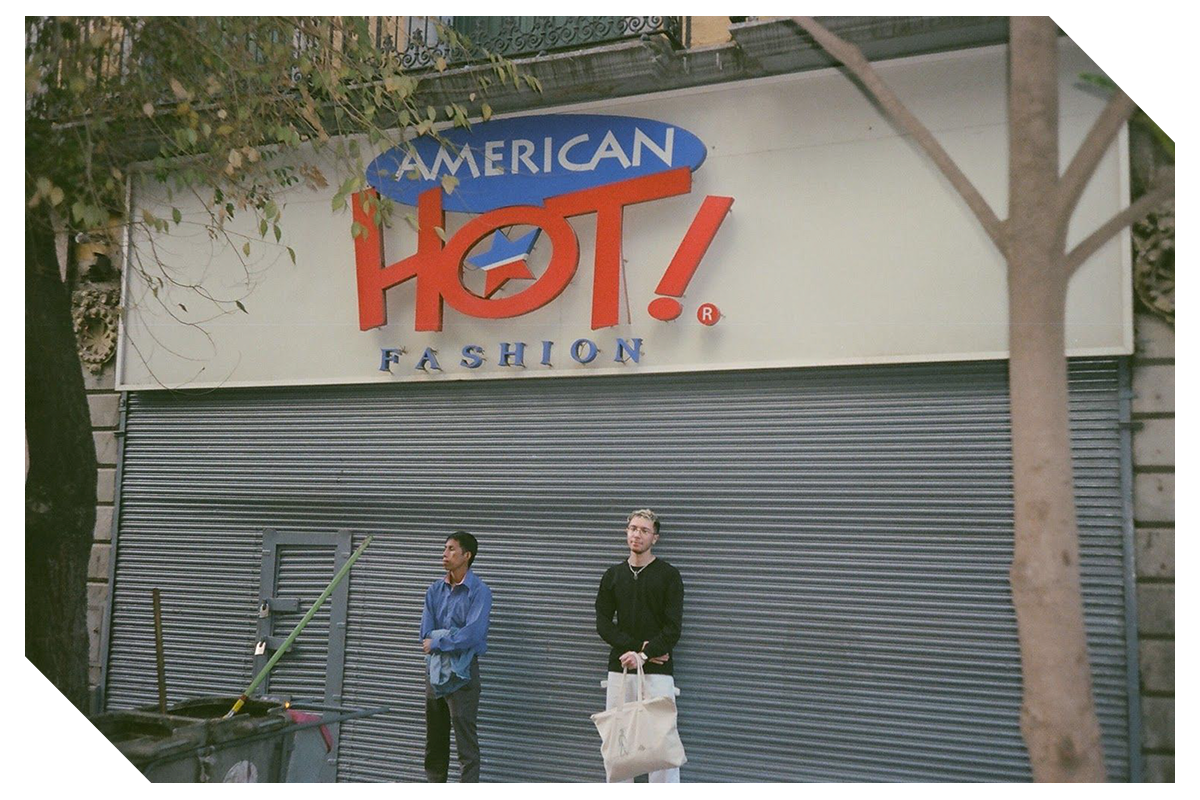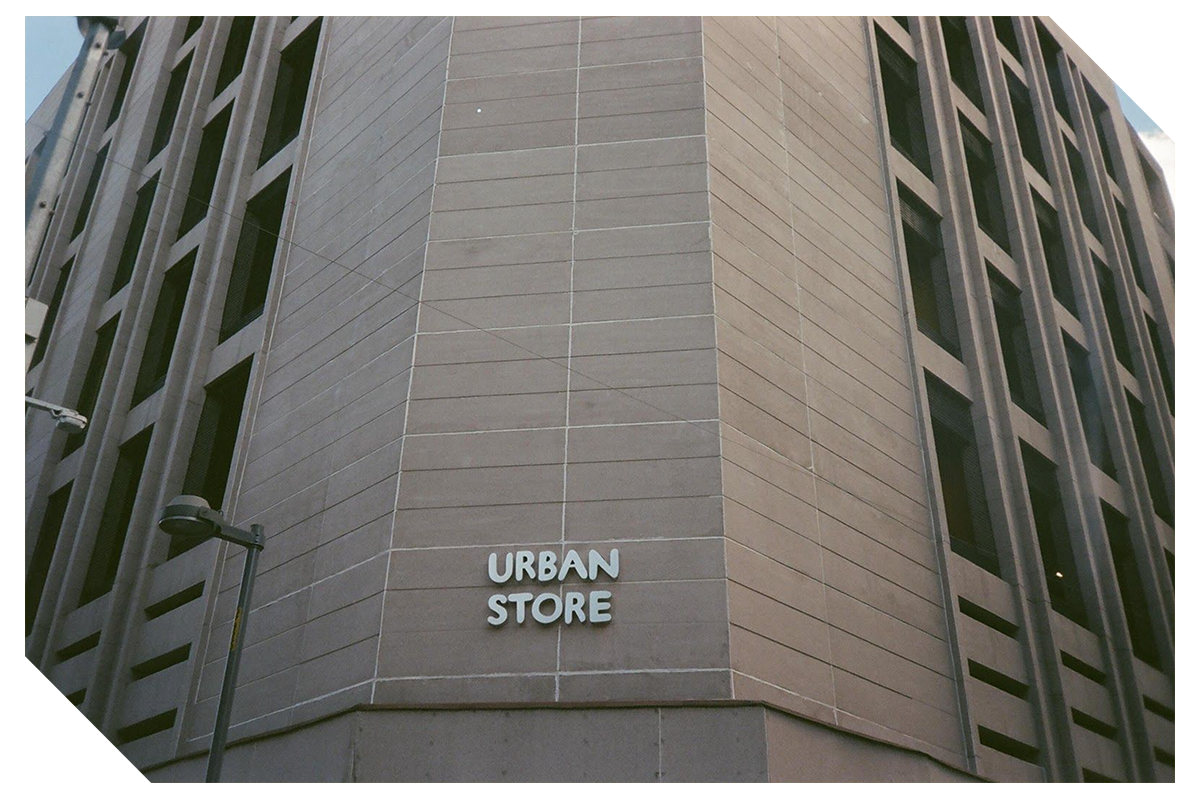The Redux of the American Mall
By Frankie Caracciolo
Illustration by Sidney Howard
Consider that, until a certain age, every day is another opportunity to unwittingly fall in love with a marketing campaign. Consider also that, for metaphor’s sake, you could be a proactive consumer, keen to grow up already, selling your Beanie Baby collection to chase brands and a lifestyle to match. Consider, finally, that you could be a youth, consuming massive amounts of media, impressionable on all fronts, using 50 Cent and Pac Sun as the twin north stars to guide your search for an identity that would take you from miasmic pre-teen awkwardness straight to “Can I be in your MySpace Top 5?” cool.
Or it could be that you’re caught in the Bermuda Triangle between the three like I was for summers on end, aspiring to be a suburban teen, humorously telling classmates wearing Baby Phat and Sean John sweatsuits that I like girls that wear Abercrombie & Fitch. I loved the American Mall then, or at least the cultural version I’d been sold. But, a couple of things: I was from New York and had only ever been to the mall with my parents which, I assume we all know, is not cool.
Since around roughly when the so-called Greatest Generation were kids, America pursued suburbia with such expediency that it isn’t even hyperbolic to say that shopping locally meant… at the mall. As many rhinestones as Juicy Couture could fit on a sweatsuit there were malls, grand complexes of commerce that defined the retail experiences for the nation for decades and gave aimless purpose to generations of teens—at least those for whom in loco parentis was a foreign concept best kept as a plot point in the Series of Unfortunate Events saga. Still, the imprint of mall culture is deep; a facsimile with a long enough tail to become the end event in retail expression and growth in even the densest urban environment.
 Images Courtesy of the Author
Images Courtesy of the AuthorAnd then around the time my interest in becoming the first member of G-Unit to wear a puka shell necklace peaked, my dad’s boss’, boss’, something quit his day job and started a company called Amazon. You know what happened next and now we have Instagram accounts dedicated to cataloging vacant and defunct shopping centers, their crumbling infrastructure a porous metaphor for what? Who we are? How we shop? That money isn’t real, only appetite and consumption?
Raise of hands here, it’s fair to say that America never got over the mall, right? What changed was the landscape, sure, but more so the mentality: how we shop and how we prefer to be courted by brands. How we want to experience consumer capitalism now is if it looks good on Instagram. Today, when you visit the shopping mall Santa (if that’s your thing), you need a selfie with old Saint Nick or those Christmas gifts will never happen.
A lot’s changed but the concept remains. The Mall of America opened in Minnesota in 1992. The grandiosity abounds, I hear: a mall in the style of an airport terminal that a carnival got lost in and never left. (Maybe Minnesotans needed something, um, wild to fill the void what with the North Stars leaving around then, but it’s unclear.) More locally, however, within the last couple of years, we've witnessed the unveiling of variations on the mold the Mall of America filled that I’m calling The Redux.

Images Courtesy of the Author
The Oculus. Hudson Yards. American Dream.* Each is something, well, special. Each came with much hullabaloo and haters and, it’s generally agreed from both sides, cost too much money. Each was a prized real-estate venture, complete with a checklist of guaranteed press coverage, namely, a bluechip architect with a funky vision, completely incongruous with the old guard and avant-garde; and each went about as well as massive infrastructural projects can go in the 21st Century: 🆗. Each opened behind schedule and New Jersey’s American Dream only made it through half of its four-part unveiling process before it closed for Quarantine.
But such criticisms aren’t quite the point here. It’s like Disney taught us: it’s what’s on the inside (and outside, to be honest) that counts. The next stage in American malls is more ambitious, slicker, sleeker, experience-and-aspiration laden. They’re appointed with just the right amount of amenities and shops to appeal to tourists be they Iowan or Korean. White-collar, blue-collar, or tie-dye hoodie? They’re all invited, too. If you’re imagining me pitching you what sounds like a pastiche of an Apple store it’s because that’s exactly what the new mall is (+/- echoes of Milan’s Galleria Vittoria Emanuele II and Paris’ Galeries Lafayette Haussmann are inevitable, too).

The conglomeratization of contemporary life is a cultural convention that never ends. ComplexCon and Comic-Con are, really, only niche by proxy nowadays. Our current love of mixed-use retail, of entertainment and business and business as entertainment, is the expectation for today’s consumer and for tomorrow’s money. The mall remains where we’ll want to go when we want to be social, or more accurately, to be seen. It’s where we’ll want to shop because we want something tactile, enticed away from Amazon because of the in-store only deals and discounts. It’s where we’ll go because the food court is reputable and so close to the office or on the way home from work. It’ll have the best movie theater, bowling alley, amusement park, and bathroom lighting. If the best part of shopping online is clicking “purchase,” then the best part of the new mall is to walk the floors bag(s) in hand.
For however much we want to socialize in person again, we’re daily becoming more cautious about where we go and who we’re in contact with. Once the American Dream opens, it’s unlikely a crowd of thousands will show up, faces pressed against the glass, waiting to get in. Likely, many will watch someone else’s feed on social media or read some stranger’s take on what it was like. For our part, the folks at Team Epiphany have long been discussing an outing since around when there was outrage against Lana Del Rey’s lack of nominations for Norman Fucking Rockwell! and people still cared about things like award shows. Still, it’s been built and so the people will come. Experiential and retail will need a revival and novel ways to court consumers out of their homes and into social spaces following this pandemic, and The Redux of the American Mall will be our proving ground. ︎
*Honorable mentions for Williamsburg and Soho, neighborhoods-as-malls that have become a template for global cities the world over to mimic.

Images Courtesy of the Author